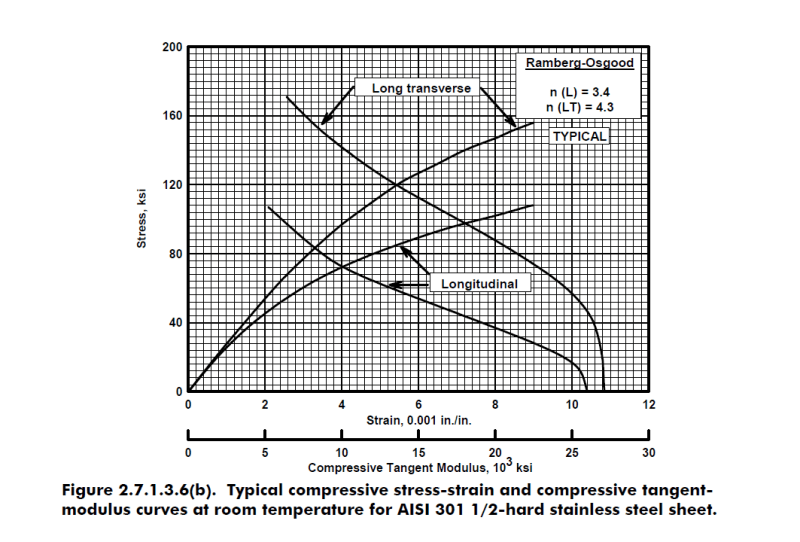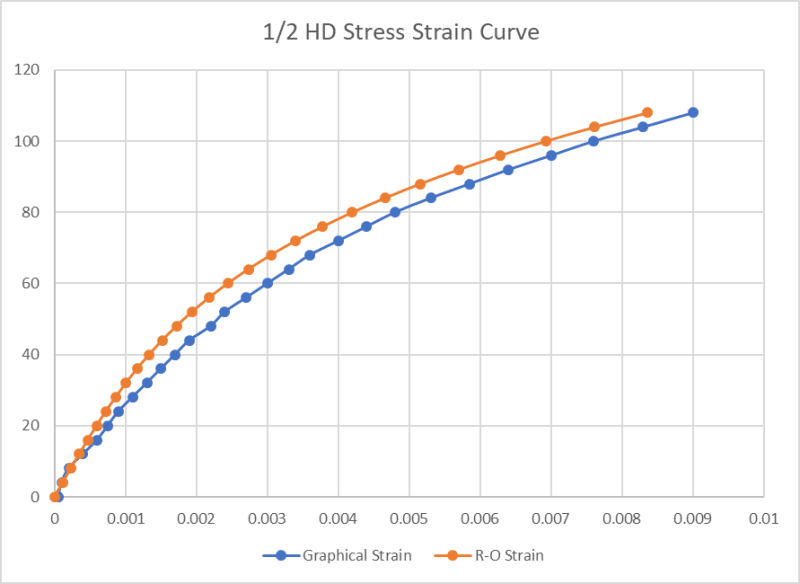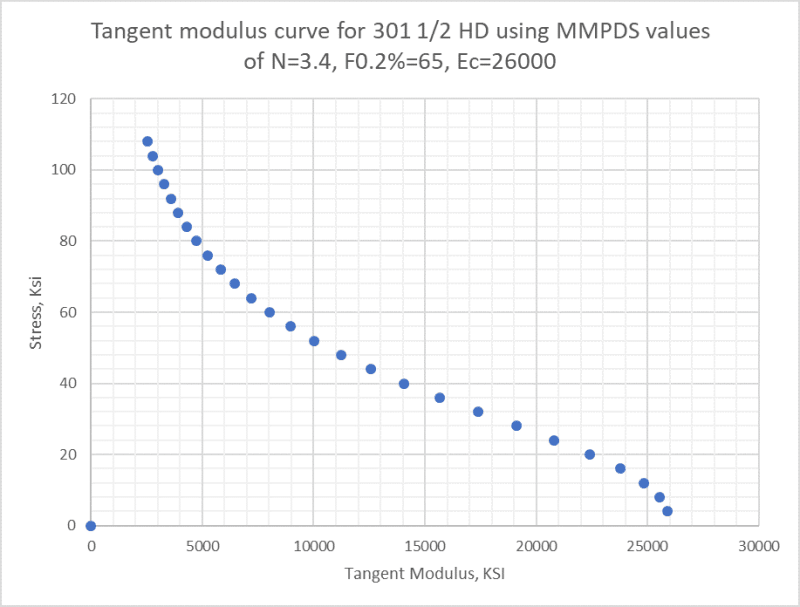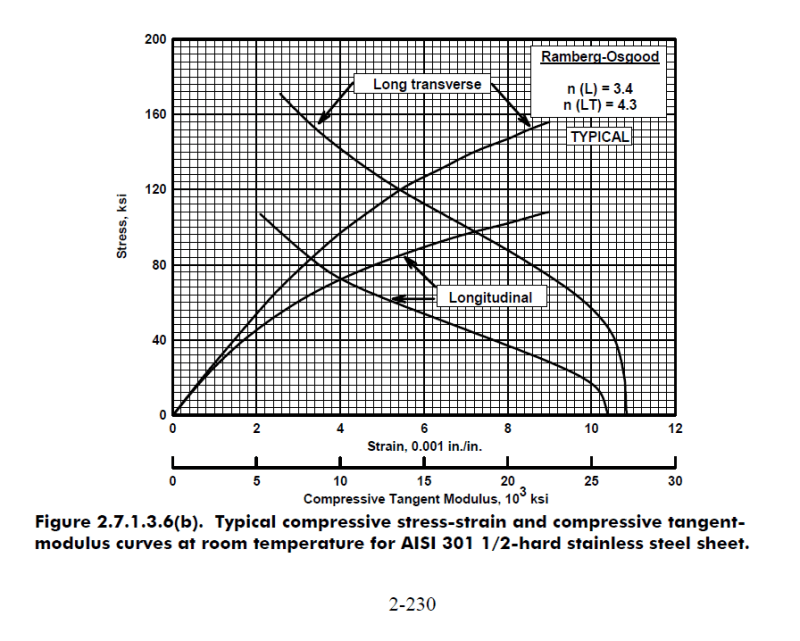Kevin James
Mechanical
Good Afternoon,
I am in the process of creating standardized calculation sheets for a new job. One of the sheets will be a buckling and crippling sheet, based on Flabels/bruhn niu etc.... The issue I am having is with the tangent modulus curves presented in MMPDS-01.
Each compressive stress strain and tangent modulus graph has a ramberg-osgood number listed in it. Using this and the F0.2% (Fcu) yield stress of the material, you are supposed to be able to recreate the tangent modulus or stress strain curve. In the passed I just read off the values from those graphs, but I would like the spreasheets to be a bit more user friendly and automated.
number listed in it. Using this and the F0.2% (Fcu) yield stress of the material, you are supposed to be able to recreate the tangent modulus or stress strain curve. In the passed I just read off the values from those graphs, but I would like the spreasheets to be a bit more user friendly and automated.
Here is the issue I am having. Using the given n value and Fcu listed in MMPDS for the material, I can't recreate the curves to a good accuracy. I was able to fudge the numbers around until I got it, but its not the right way. I am wondering what I am missing about these graphs. Here is an example of the deviation between ramberg-osgood and the given graphs in MMPDS. I have checked everything I can think of but have been driven to write my first post ever on Eng-tips. Thank you in advance. I hope this is in the right section.
Could it be the wrong basis? Some other value of Fcy? I have read the section on creating the graphs in MMPDS. I have read the section on R-O also. The graphs for 1/4HD have an even worse offset.
James
1/2 HD Fcy: L A basis: 61ksi n=3.4


I am in the process of creating standardized calculation sheets for a new job. One of the sheets will be a buckling and crippling sheet, based on Flabels/bruhn niu etc.... The issue I am having is with the tangent modulus curves presented in MMPDS-01.
Each compressive stress strain and tangent modulus graph has a ramberg-osgood
Here is the issue I am having. Using the given n value and Fcu listed in MMPDS for the material, I can't recreate the curves to a good accuracy. I was able to fudge the numbers around until I got it, but its not the right way. I am wondering what I am missing about these graphs. Here is an example of the deviation between ramberg-osgood and the given graphs in MMPDS. I have checked everything I can think of but have been driven to write my first post ever on Eng-tips. Thank you in advance. I hope this is in the right section.
Could it be the wrong basis? Some other value of Fcy? I have read the section on creating the graphs in MMPDS. I have read the section on R-O also. The graphs for 1/4HD have an even worse offset.
James
1/2 HD Fcy: L A basis: 61ksi n=3.4




